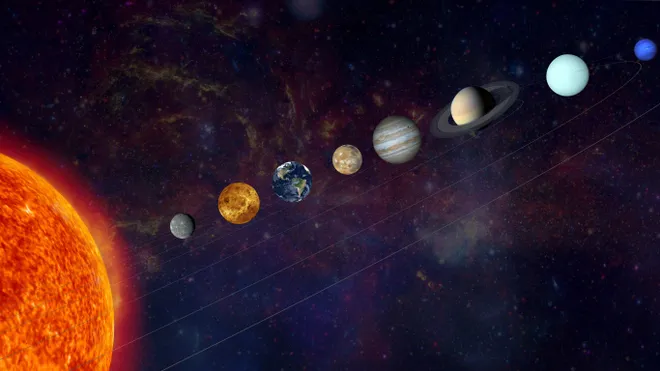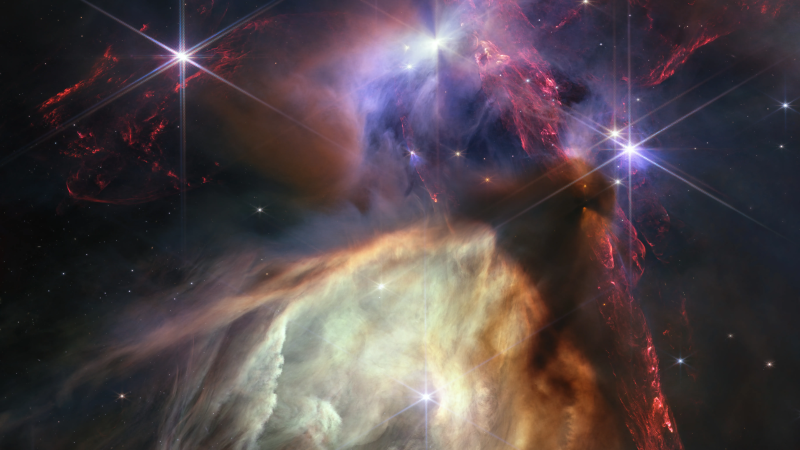Looking to see the planetary parade June 3? NASA says you may be disappointed. Here's why.
Folks who are expecting to see a dazzling parade of planets on Monday June 3 may be disappointed by what they end up seeing in the sky and, instead, experts are saying they should manage their expectations and wait until the end of the month to see the planetary alignment.
The past couple of months have been pretty eventful for backyard astronomers. First, the solar eclipse in April, then the northern lights made a rare appearance in May, and now a parade of planets will make its 2024 debut.
Stargazers are supposed to be able to see six planets, Jupiter, Mercury, Uranus, Mars, Neptune and Saturn, aligned.
However, experts from NASA and Astronomers Without Borders both agree that it won't be the best time to see the planetary parade. That's because Uranus, Mercury and Jupiter will be swallowed up by the sun's light and be too close to the horizon to be visible.
Northern lights:Northern lights in US were dim compared to 'last time mother nature showed off': What to know

Experts say be patient: Planet parade will be more of a show later in June
"To me, the closest thing to a planet parade is June 29th, when you’ll have Saturn, the third-quarter Moon, Mars, and Jupiter arrayed across the sky at dawn," Preston Dyches, a public engagement specialist for NASA's Jet Propulsion Laboratory told USA TODAY. Dyches has a background in astronomy and hosts NASA's "What's Up," a monthly video series that describes what's happening in the night sky.
Andrew Fazekas, the communications manager for Astronomers Without Borders, says that when it comes to the planetary parade on June 3, it will be nearly impossible to see all the planets with the naked eye.
Both Fazekas and Dyches agree that it's better to see the planetary parade on June 29, instead.
On June 3, Jupiter, Mercury and Uranus are going to be "way too close to the sun," said Fazekas. So, it will be difficult to see those three planets.
So, folks who do decide to rise before the sun does on Monday morning just to get a glimpse at this celestial phenomenon could be setting themselves up for disappointment.
In this case, good things come to those who wait. And waiting until the end of the month will give stargazers a better chance at viewing the planets.
"If you're patient and you wait until the end of the month, these planets will move farther away from the sun higher up in the early morning sky," Fazekas told USA TODAY "So, that you will get an easier chance to pick them out in the sky.
Folks will not only get a better view of the planetary parade if they wait until June 29, but they'll be able to gaze at the stars on Friday night into Saturday morning, instead of having to view it during the work week like they would this Monday morning.
Excitement from solar eclipse, northern lights creating planet parade hype
People are expecting to see something amazing the morning of June 3, said Fazekas. But, he's worried the expectations set by two very viral celestial events, the solar eclipse and northern lights, and sensationalization on social media could raise people's expectations a bit too high and lead to a lackluster experience.
He adds that he's concerned one bad experience that was overhyped online could steal people's enthusiasm about astronomy.
"What worries me is that we set people up for disappointment," said Fazekas "And then they won't want to do it again."
According to Fazekas, he's never seen so many people interested in sky-watching, and he doesn't want the excitement to end.
What will you be able to see?
According to a program called SkySafari Pro, you will be able to see the following during the planetary parade on June 29:
- Jupiter, which will be closest to the horizon.
- Uranus.
- Mars.
- The moon.
- Neptune.
- Saturn.
What is a planetary parade?
Basically, it's when the planets form a straight line and look like they're marching across the night sky and form a sort of space parade.
It's also known as a large planetary alignment, states Delaware Online, a part of the USA TODAY Network.
What equipment do you need to view a planetary parade?
According to Fazekas, you will still need binoculars and telescopes to see some of the planets.
"Neptune is a planet that you need strong binoculars or a small telescope to be able to see," said Fazekas. "And it's not easy to find either."
Folks who go out to stargaze on June 28, will be able to see Neptune right next to the moon. On June 29, it will be farther away from the moon, and be above it instead.
Apps, like Skyview on the Apple app store, can turn people's phones into a tool that helps them identify celestial bodies in the night sky.

Where will you be able to see the planetary parade?
According to Fazekas, people will need to do the following to get a view of the planetary parade:
- Get up early, before sunrise.
- Find a spot with a clear view that faces the east or southeastern sky.
- Have your binoculars or telescope ready to view planets that aren't visible to the naked eye.
Disclaimer: The copyright of this article belongs to the original author. Reposting this article is solely for the purpose of information dissemination and does not constitute any investment advice. If there is any infringement, please contact us immediately. We will make corrections or deletions as necessary. Thank you.


